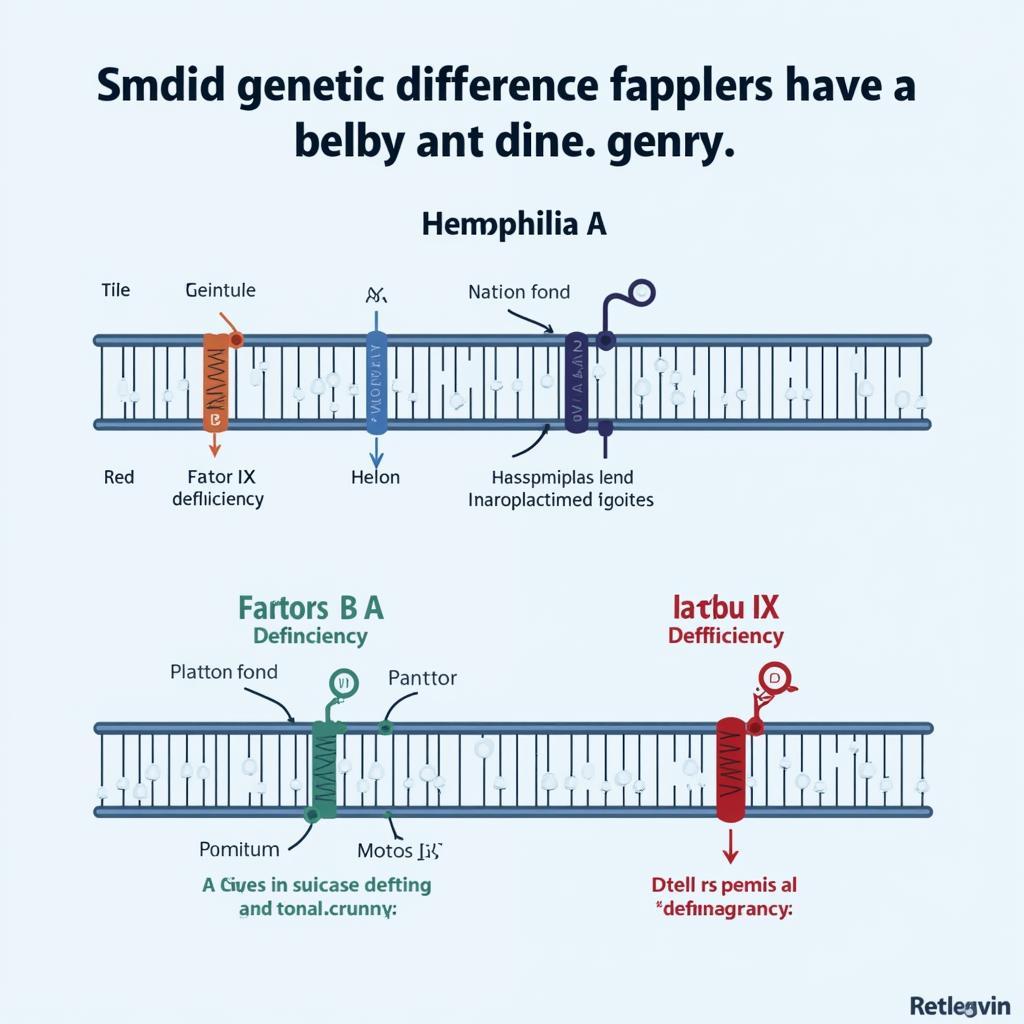Hemophilia B Vs A: This article delves into the key distinctions between Hemophilia A and B, two inherited bleeding disorders. We’ll explore their causes, symptoms, diagnostic procedures, and available treatment options, empowering you with the knowledge to differentiate these conditions effectively.
What are Hemophilia A and B?
Hemophilia A and B are genetic bleeding disorders that affect the blood’s ability to clot properly. This means individuals with hemophilia experience prolonged bleeding after injuries or surgeries, and can even have spontaneous bleeding episodes within joints or muscles. While both types share similar symptoms, the underlying causes differ.
Hemophilia A vs B: The Genetic Difference
The core distinction between Hemophilia A and Hemophilia B lies in the specific clotting factor deficiency. Hemophilia A, also known as classic hemophilia, stems from a deficiency or dysfunction of clotting factor VIII (eight). Hemophilia B, sometimes called Christmas disease, results from a deficiency or dysfunction of clotting factor IX (nine). This seemingly small difference in the deficient clotting factor has significant implications for diagnosis and treatment.
 Sự khác biệt về gen giữa Hemophilia A và B
Sự khác biệt về gen giữa Hemophilia A và B
Inheritance Pattern
Both Hemophilia A and B are typically inherited in an X-linked recessive manner. This means the gene responsible for these conditions is located on the X chromosome. Since males have only one X chromosome, they are more likely to develop hemophilia if they inherit the affected gene. Females, having two X chromosomes, are typically carriers of the gene but rarely develop severe hemophilia unless they inherit the affected gene from both parents.
Symptoms of Hemophilia A and B
While the underlying genetic causes differ, the symptoms of Hemophilia A and B are largely similar. These include:
- Prolonged bleeding after injuries, surgeries, or dental procedures.
- Easy bruising.
- Spontaneous bleeding into joints (hemarthrosis), causing pain, swelling, and limited mobility.
- Spontaneous bleeding into muscles (hematomas), resulting in pain, swelling, and weakness.
- Bleeding in the urine or stool.
- Nosebleeds without apparent cause.
Diagnosing Hemophilia A vs B
Diagnosing Hemophilia A and B involves a combination of evaluating the patient’s medical history, conducting a physical examination, and performing specific blood tests. Blood tests measure the levels of clotting factors VIII and IX. A reduced level of factor VIII indicates Hemophilia A, while a reduced level of factor IX points towards Hemophilia B.
Treatment Options
Treatment for both Hemophilia A and B primarily focuses on replacing the missing clotting factor. This can be achieved through intravenous infusions of concentrated clotting factor products. The specific factor administered depends on the type of hemophilia. For Hemophilia A, factor VIII concentrates are used, and for Hemophilia B, factor IX concentrates are administered.
Prophylaxis
Prophylactic treatment, or preventative treatment, involves regular infusions of the deficient clotting factor to prevent bleeding episodes. This approach is particularly beneficial for individuals with severe hemophilia.
Conclusion: Hemophilia B vs A – Key Takeaways
Understanding the differences between Hemophilia A and B is crucial for effective diagnosis and treatment. While both conditions share similar symptoms, the distinct genetic causes, focusing on the deficiency of either factor VIII (Hemophilia A) or factor IX (Hemophilia B), require tailored treatment approaches. With advancements in treatment options, individuals with Hemophilia A and B can lead fulfilling lives with proper medical management.
FAQ
- What is the most common type of hemophilia? Hemophilia A is more common than Hemophilia B.
- Can women have hemophilia? While less common, women can inherit hemophilia if they receive the affected gene from both parents.
- Is there a cure for hemophilia? Currently, there is no cure for hemophilia, but treatment focuses on managing and preventing bleeding episodes.
- What is the life expectancy for someone with hemophilia? With proper treatment and management, individuals with hemophilia can have a near-normal life expectancy.
- What should I do if I suspect I have hemophilia? Consult a hematologist for diagnosis and treatment.
- What are the long-term complications of hemophilia? Joint damage due to repeated bleeding is a common long-term complication.
- How is hemophilia diagnosed in infants? Blood tests can diagnose hemophilia shortly after birth.
Gợi ý các câu hỏi khác, bài viết khác có trong web.
- Hemophilia là gì?
- Các loại Hemophilia
- Điều trị Hemophilia như thế nào?